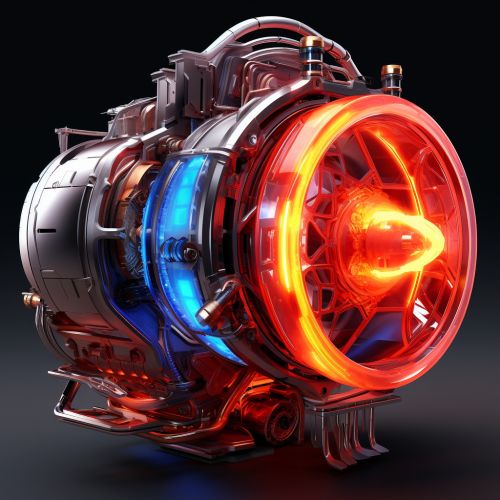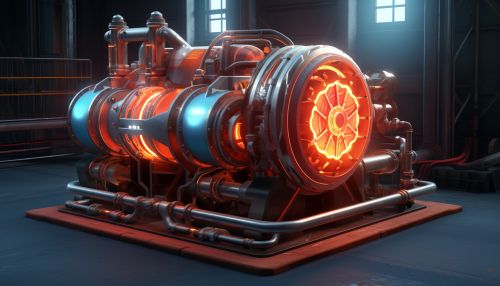Heat Engine
Introduction
A heat engine is a system that converts heat or thermal energy to mechanical work. This process is governed by the principles of thermodynamics, specifically the first and second laws. Heat engines have wide-ranging applications, from powering vehicles and machinery to generating electricity.
Basic Principles
Heat engines operate on the principle of a working substance undergoing a cyclic process. The substance absorbs heat from a high-temperature source, converts part of this energy into work, and finally rejects the remaining heat to a low-temperature sink. This cycle is repeated continuously or intermittently depending on the design and purpose of the engine.


Types of Heat Engines
Heat engines can be broadly classified into two types: internal combustion engines and external combustion engines.
Internal Combustion Engines
In internal combustion engines, the combustion of a fuel occurs within the engine itself. The high-temperature and high-pressure gases produced by combustion push against the engine's pistons, and this force is transmitted through the engine's connecting rods to the crankshaft, producing useful mechanical work. Examples of internal combustion engines include gasoline engines, diesel engines, and gas turbine engines.
External Combustion Engines
In external combustion engines, the combustion process occurs outside the engine. The heat from combustion is transferred to a working fluid inside the engine, which expands and does work on the engine's mechanical components. Examples of external combustion engines include steam engines and Stirling engines.
Thermodynamic Cycles
Heat engines operate on thermodynamic cycles. The most common cycles include the Carnot cycle, the Otto cycle, the Diesel cycle, and the Brayton cycle.
Carnot Cycle
The Carnot cycle, named after its inventor Sadi Carnot, is an idealized thermodynamic cycle that provides the maximum possible efficiency for a heat engine. It consists of two isothermal processes and two adiabatic processes.
Otto Cycle
The Otto cycle is the ideal cycle for spark-ignition (petrol) internal combustion engines. It consists of two isochoric processes and two adiabatic processes.
Diesel Cycle
The Diesel cycle is the ideal cycle for compression-ignition (diesel) internal combustion engines. It consists of two isobaric processes and two adiabatic processes.
Brayton Cycle
The Brayton cycle is the ideal cycle for gas turbine engines. It consists of two isobaric processes and two isentropic processes.
Efficiency of Heat Engines
The efficiency of a heat engine is defined as the ratio of the work output to the heat input. The efficiency of real heat engines is always less than the efficiency of an ideal Carnot engine due to irreversibilities such as friction and heat loss.
Applications of Heat Engines
Heat engines have a wide range of applications. They are used in automobiles, aircraft, ships, and power plants for electricity generation. They are also used in industrial processes where heat and mechanical work are required.
